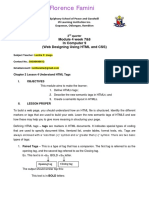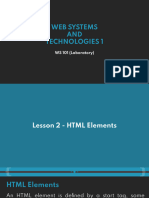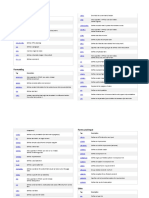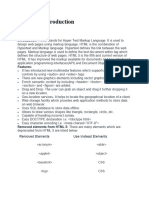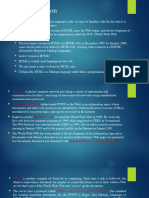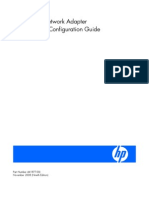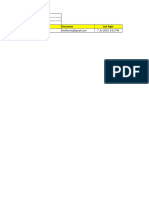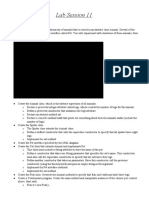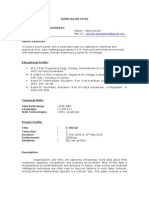Semantic HTML Cheat Sheet
Sectioning Tags
<header>: The header of a content section or the web page, often containing branding or
logos.
<nav>: Navigation links for a section or the web page.
<footer>: The footer of a content section or the web page, typically containing secondary
links, copyright notices, and policies.
<main>: Main content of a section or the web page.
<aside>: Secondary content not required to understand the main content.
<article>: Independent, self-contained block of content like a blog post or product.
<section>: Standalone section of the document, often used
within <body> and <article> elements.
<details>: Collapsed section of content that can be expanded by the user.
<summary>: Summary or caption for a <details> element.
<h1> to <h6>: Headings on the web page, with <h1> being the most important and <h6> the
least important.
Content Tags
<blockquote>: Describes a quotation.
<dd>: Defines a description for the preceding <dt> element.
<dl>: Defines a description list.
<dt>: Describes terms inside <dl> elements.
<figcaption>: Caption for a photo image.
<figure>: Applies markup to a photo image.
<hr>: Adds a horizontal line to the parent element.
<li>: Defines an item within a list.
<menu>: Semantic alternative to <ul> tag.
<ol>: Defines an ordered list.
<p>: Defines a paragraph.
<pre>: Represents preformatted text, typically rendered in a monospace font.
<ul>: Defines an unordered list.
Inline Tags
� <a>: An anchor link to another HTML document.
<abbr>: Specifies that the containing text is an abbreviation or acronym.
<b>: Bolds the containing text. When used to indicate importance, use <strong> instead.
<br>: A line break. Moves the subsequent text to a new line.
<cite>: Defines the title of creative work (e.g., a book, poem, song, movie, painting, or
sculpture). The text in the <cite> element is usually rendered in italics.
<code>: Indicates that the containing text is a block of computer code.
<data>: Indicates machine-readable data.
<em>: Emphasizes the containing text.
<i>: The containing text is displayed in italics. Used to indicate idiomatic text or technical
terms.
<mark>: The containing text should be marked or highlighted.
<q>: The containing text is a short quotation.
<s>: Displays the containing text with a strikethrough or line through it.
<samp>: The containing text represents a sample.
<small>: Used to represent small text, such as copyright and legal text.
<span>: A generic element for grouping content for CSS styling.
<strong>: Displays the containing text in bold. Used to indicate importance.
<sub>: The containing text is subscript text, displayed with a lowered baseline.
<sup>: The containing text is superscript text, displayed with a raised baseline.
<time>: A semantic tag used to display both dates and times.
<u>: Displays the containing text with a solid underline.
<var>: The containing text is a variable in a mathematical expression.
Embedded Content and Media Tags
<audio>: Used to embed audio in web pages.
<canvas>: Used to render 2D and 3D graphics on web pages.
<embed>: Used as a containing element for external content provided by an external
application such as a media player or plug-in application.
<iframe>: Used to embed a nested web page.
<img>: Embeds an image on a web page.
<object>: Similar to <embed> but the content is provided by a web browser plug-in.
� <picture>: An element that contains one <img> element and one or more <source> elements
to offer alternative images for different displays/devices.
<video>: Embeds a video on a web page.
<source>: Specifies media resources for <picture>, <audio>, and <video> elements.
<svg>: Used to define Scalable Vector Graphics within a web page.
Table Tags
<table>: Defines a table element to display table data within a web page.
<thead>: Represents the header content of a table. Typically contains one <tr> element.
<tbody>: Represents the main content of a table. Contains one or more <tr> elements.
<tfoot>: Represents the footer content of a table. Typically contains one <tr> element.
<tr>: Represents a row in a table. Contains one or more <td> elements when used
within <tbody> or <tfoot>. When used within <thead>, contains one or more <th> elements.
<td>: Represents a cell in a table. Contains the text content of the cell.
<th>: Defines a header cell of a table. Contains the text content of the header.
<caption>: Defines the caption of a table element.
<colgroup>: Defines a semantic group of one or more columns in a table for formatting.
<col>: Defines a semantic column in a table.













